
The province of Cádiz lies near the African continent. It is here where classical mythology places the Pillars of Hercules and it is here where you will find breathtaking wonders. Its capital is one of them, a city founded by Phoenicians 3,000 years ago that witnessed the enactment of the first Spanish Constitution. Not only is it one of the most beautiful cities in Spain, but is also the oldest. If you decide to explore the outskirts of Cádiz, you’ll get to spots of daunting beauty, proof of the richness of this Andalusian province.
Some of them hug the sea, while others hide among the mountains. Some are memories of the good old days, while others keep the secret of the purest Andalusian essence. These localities seduce every traveller and cover them with a compelling charm.
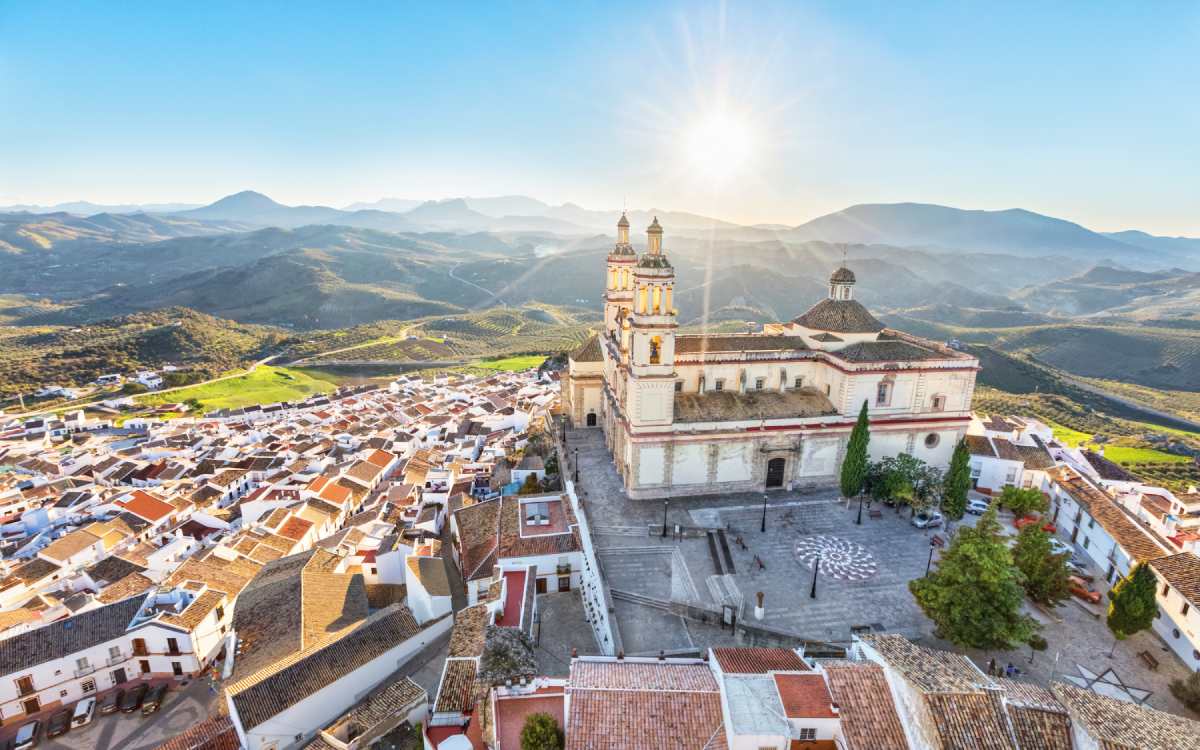
Olvera. | Shutterstock
Many villages of white façades and labyrinthine, steep streets are splattered throughout the heart of the Sierra de Cádiz. Each one of them is a wonder itself, but together they shape one of the most interesting and photogenic routes in the province: the route of the white villages of Cádiz.
Some of these localities preserve an interesting Andalusí heritage, such as Olvera or Zahara de la Sierra and their impressive Arab fortresses. Arcos de la Frontera watches over the landscape from the top of a cliff. The surprising streets of Setenil de las Bodegas flow under a giant rock. Ubrique, Grazalema, Benamahoma, Prado del Rey… A total of 20 localities are part of this fascinating complex.
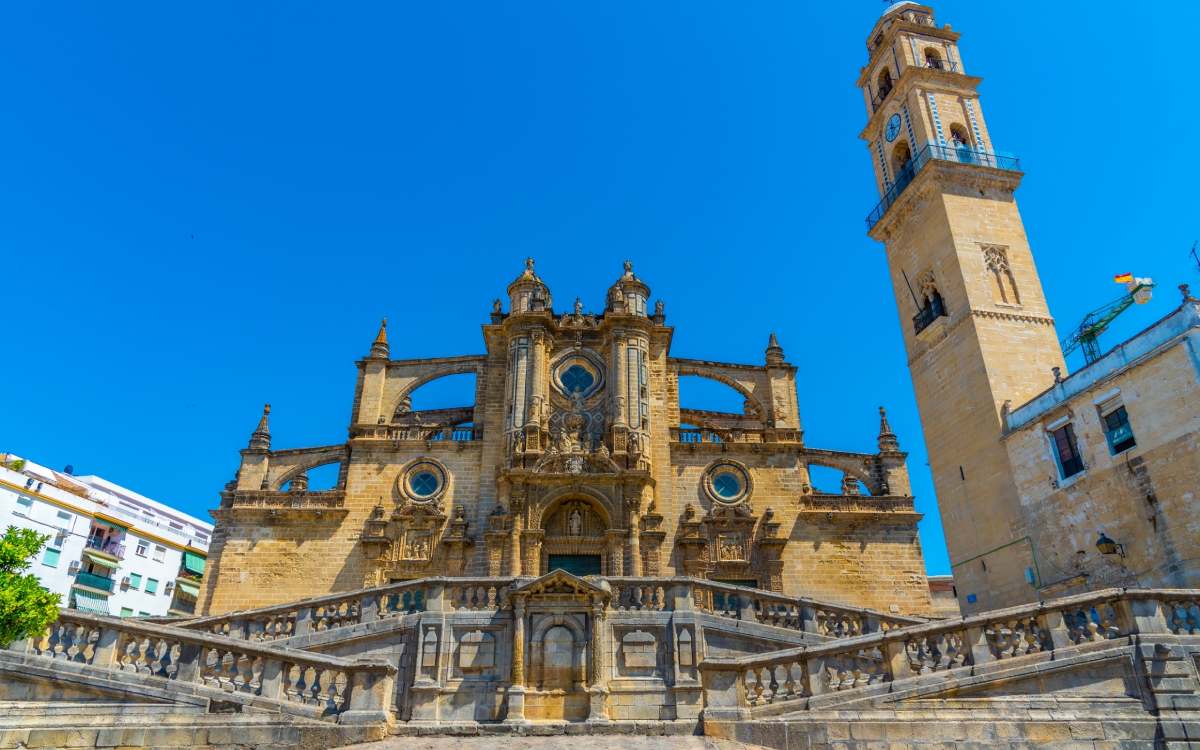
Cathedral of Jerez de la Frontera. | Shutterstock
The streets of Jerez de la Frontera are filled with music: fandangos, bulerías, tientos, and alegrías. People in Jerez don’t just listen and dance to flamenco, they feel it. This is one of the cradles of flamenco, an art that belongs to its truest essence. There is another art that you can taste, the art of those wines whose name is famous all over the world and that you should taste in its wine cellars or traditional taverns, the tavancos.
But there are many more reasons why Jerez de la Frontera is one of the wonders of Cádiz. One of them is the dance of the horses of the Real Escuela Andaluza del Arte Ecuestre and their performance of superb choreographies. And we should mention its monumental heritage too: its alcázar, its cathedral and its cartuja are worth a visit too.

El Puerto de Santa María. | Shutterstock
The trade with America brought El Puerto de Santa María to its golden age in the 16th and 18th centuries. The city enjoyed a strategic location, facing the Bay of Cádiz. Merchants, aristocrats and burgeois moved to this area, thriving and building mansions in the following years. Palaces such as Araníbar, Santa Cruz, Valdivielso, or Vizarrón remind us to that golden age and explain the city’s nickname.
But El Puerto de Santa María is so much more than its palace. There are many other treasures, such as the San Marcos Castle and the Mayor Prioral Church, besides its popular wine cellars. Besides, it’s the birthplace of two renowned figures of Spanish literature: Rafael Alberti and Pedro Muñoz Seca. Not only does this city honour them in the places where they lived, but it also preserves its heritage.
The province of Cádiz offers many natural spaces of great ecological value. You can get to Doñana National Park from Sanlúcar de Barrameda, but this is only a tiny portion of everything you will find in Cádiz. It’s just one of its natural wonders, but there are many others that have breathtaking landscapes and a wide variety of ecosystems.
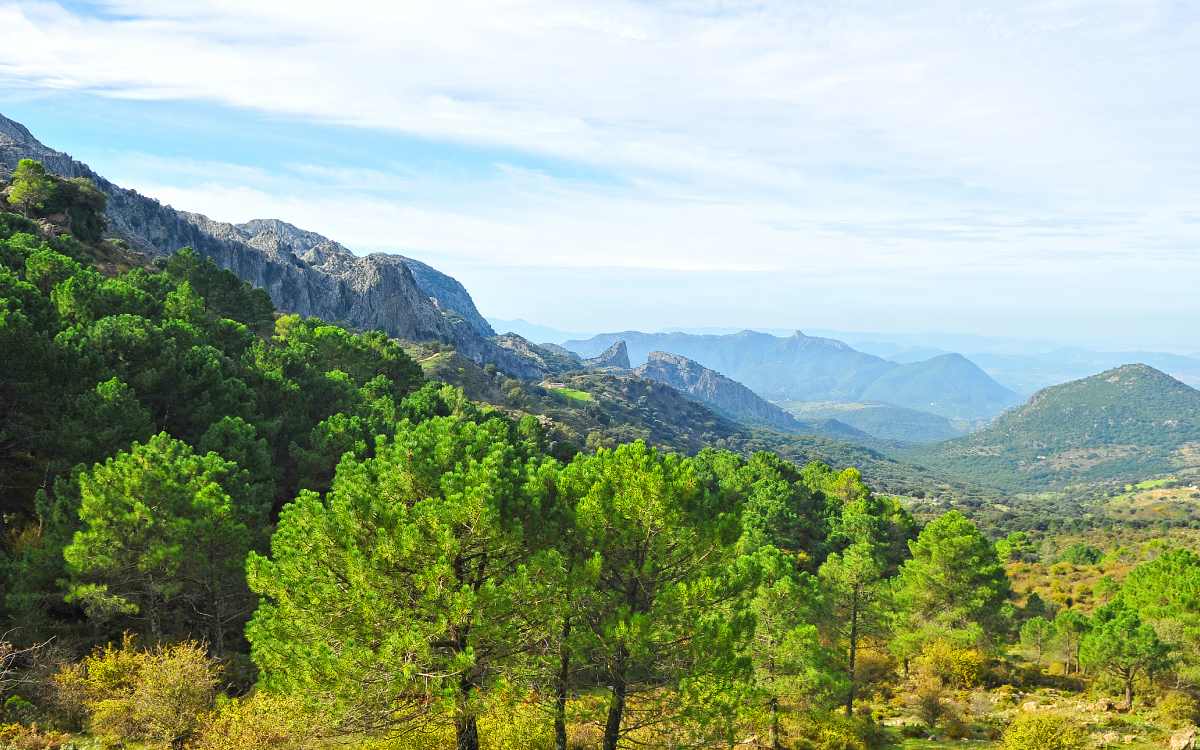
Sierra de Grazalema Natural Park. | Shutterstock
It might seem ironic for the rainiest place in Spain to be in Cádiz, but it is. That place is the village that gives this mountain range its name. The Sierra de Grazalema Natural Park is home to endless valleys, chasms, gorges, and canyons whose walls that reach 400 metres in height. Besides, a very special inhabitant can be found here: the particular pinsapo or Spanish fir.
But Sierra de Grazalema’s richness isn’t only natural. Prehistoric remains have been found in the area and you can still walk a medieval road. And these pueblos blancos of great tradition can be perceived in its forests and escarpments.

Alcornocales Natural Park. | Shutterstock
To dive into the Alcornocales Natural Park, which belongs both to Cádiz and Málaga, is to discover the largest cork oak forest in Spain and one of the largest in Europe. This forest has provided the nearby villages with cork since time immemorial.
But the singularity of this landscape gets to a maximum degree in its canutos. The humidity of rivers and streams, and the humidity of the nearby ocean create fantastic landscapes in these deep, narrow valleys. These corners of primitive atmosphere and their ferns and ivy often hide behind the thick fog. And this is one of the reasons why this space is a true wonder: it hosts the only subtropical forest in continental Europe.
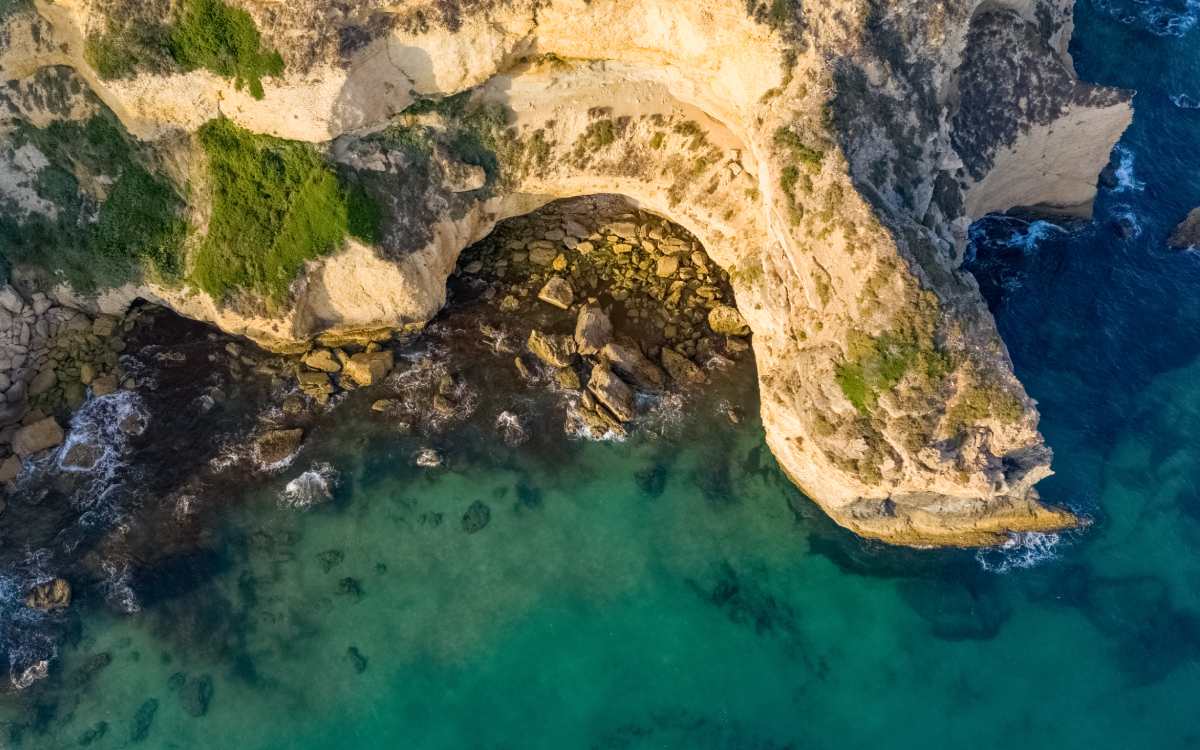
La Breña. | Shutterstock
In La Breña y Marismas del Barbate Natural Park, pine forests die at the edge of cliffs that rise high over the Atlantic waters. Sea and forest merge into one of the most breathtaking postcards of the coast of Cádiz. But this park also has tidal marshes and dune systems that, together with the brave ocean, create a unique complex of very diverse ecosystems in the same place.
A path will take you to these cliffs that shelter tiny coves and were silent witnesses to the Battle of Trafalgar. Other routes wind through the dense pine forest or lead to wetlands teeming with water birds. Whether you explore it by foot, by horse, or by boat, this park is a true discovery in the province of Cádiz.
It’s no secret that the beaches of the province of Cádiz are among Spain’s best beaches. Some of them are so much more than a place to spend a relaxing day sunbathing or practicing water sports. The past is still present on these beaches.

Cape Trafalgar. | Shutterstock
Crystal-clear waters and golden sand as far as the eye can see. It could be simply one of the wonderful beaches of Cádiz, but this sandbank in Caños de Meca is more than that. It sits on Cape Trafalgar, a spot under the careful watch of a 34-metre-high lighthouse. In the 19th century, a bloody naval battle took place here and the Franco-Spanish troops succumbed dramatically to the English ships.
The lighthouse was built in 1860, half a century after that battle whose memory is still alive under these waters since the remains of those sunken ships are still visible from the surface of the sea. You don’t need to dive in to discover the other great secret of this beach: it’s one of the best places to watch the sunset in Spain.
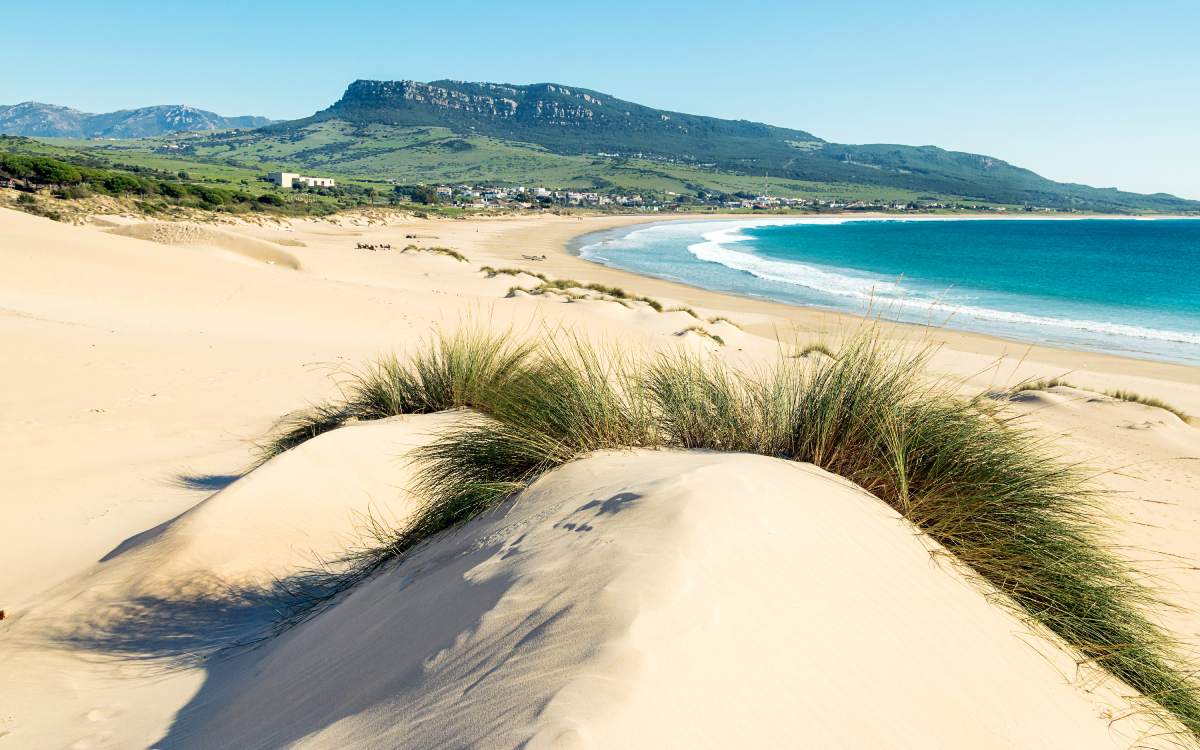
Playa de Bolonia. | Shutterstock
Tarifa’s Playa de Bolonia has everything it needs to be considered one of the wonders of Cádiz. It’s a virgin beach surrounded by pines and has a sand strip that juts out into the land. These dunes reach 30 metres in height and 200 metres in their widest areas. Its dimensions are breathtaking, but so is its natural richness.
Besides, if you look at this beach, you will see the ruins of Baelo Claudia, one of the most important Roman sites in Andalucía. The city attained great splendour thanks to the fabrication of garum, a fish sauce that was priceless at the time. It was elaborated here and later shipped to the Imperium. It is possible to see the remains of the old factory, the theatre, and the basilica, among others, on this site.
You can also read this article in Spanish here.
Follow us on Facebook!